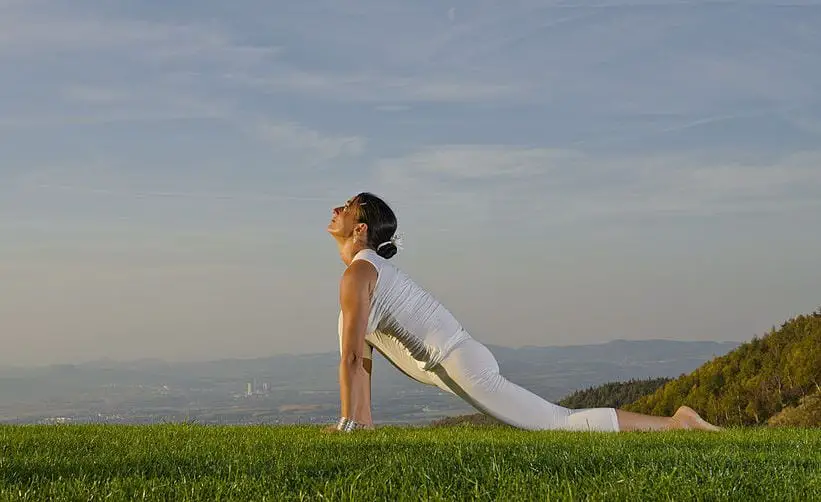Ashwa Sanchalanasana known as Equestrian Pose is a low lunge and falls into the category of balancing postures. The Sanskrit name Ashwa Sanchalanasana is derived from three words. Ashwa meaning Horse, Sanchalana meaning movement and Asana meaning Posture. This asana is practiced at the 4th and 9th position in Suryanamaskar series. Practicing this asana stimulates abdominal organs. Along with it there are several other benefits of Ashwa Sanchalanasana. Let’s begin by knowing the steps to practice Ashwa Sanchalanasana.

Steps to practice Ashwa Sanchalanasana (Equestrian Pose)
To achieve maximum benefits and to avoid any possible injury; it is very significant to know the right alignment of the body in the asana. Knowing the alignment of your body might be challenging when you are holding the pose. Therefore it is always recommended to practice in the presence of a competent yoga instructor. Below are the steps to practice Ashwa Sanchalanasana correctly.
Base Position : Vajrasana (Thunderbolt Pose).
- From Vajrasana stand on your knees keeping the knees and feet together.
- Bring the right leg in front so that it forms a 90-degree angle between the thigh and the calf. The right thigh must be parallel to the floor. The knee should be aligned with the ankle.
- Keep the arms by the side of right leg. Fingers touches the ground supporting the body to maintain the balance in the posture.
- Rest the knee of the left leg on the floor. Look upwards.
- This is the final position. Hold this position as long as it is comfortable. Do not strain the body.
- To release the posture bring the head down and then take the right leg back to sit in Vajrasana.
- Follow the same steps with the other leg.
Variation 2: In this variation, raise the arms above the head in namaste gesture. This will intensify the stretch of the thigh. One should practice this variation only after practicing the 1st variation for a week or so.
Precautions for Ashwa Sanchalanasana (Equestrian Pose)
The precautions for Ashwa Sanchalanasana be careful about are given below:
- Be careful with the alignment of the knee in the front leg, it should be in line with the ankle. Don’t over practice as that could strain the muscles.
- People with any neck problem should look straight instead of upward direction.
- People suffering from any kind of knee and ankle problem should avoid practicing this asana.
Benefits of Ashwa Sanchalanasana (Equestrian Pose)
One can experience the health benefits of Ashwa Sanchalanasana gradually on regular practice:
- Stretches spine therefore increasing the flexibility of the back.
- Strengthens the knee and ankles, opens up groin and hips.
- Strengthens the muscles of the chest hence enhances lung capacity.
- Tones and massages kidney, liver leading to their well functioning.
Stay healthy stay strong and get the best out of life.
Like this post? If yes, then don’t forget to share it with your friends and family.
Here are few hand-picked article you should read :
- Pawanmuktasana (Wind Relieving Pose) steps, precautions & benefits.
- Purvottanasana (Upward Plank Pose) steps, precautions & benefits.
- Marjariasana (Cat Stretch Pose) steps, precautions & benefits.
Please feel free to ask and suggest anything in the comments.
Thanks for reading. Visit again.

Sun Salutation A does not have Ashwa sanchalasana in it. Does this mean, practicing sun salutation A would not decrease fat from hip and thigh area?
Pose 3 Padahastasana and pose 5 Parvatasana also reduces fat from hips and back of thighs pretty well. But only Ashwa Sanchalanasana gives a deep stretch to them. If you don’t feel like doing it, you may try some other poses. Butterfly pose works very well on thighs especially inner thighs.